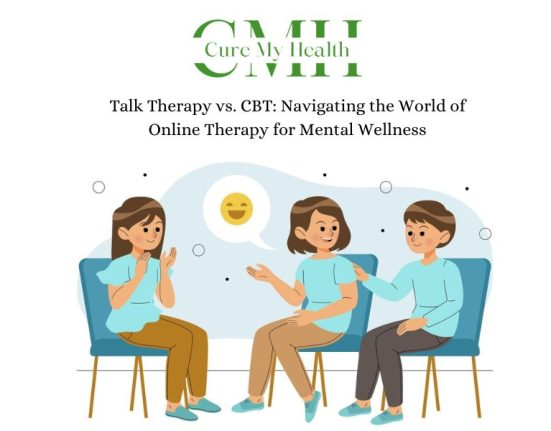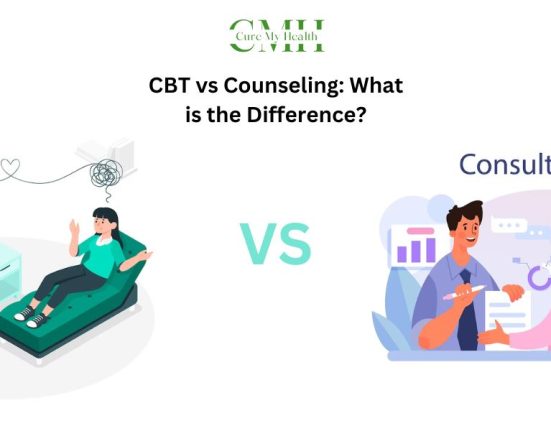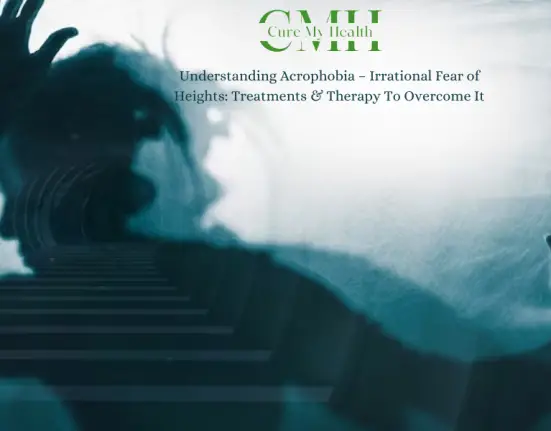Anxiety is a common human experience. We’ve all felt that uneasy knot in our stomachs before a big presentation or the racing thoughts that keep us awake at night.
But for other people, anxiety goes beyond passing concern and instead takes on a constant, oppressive presence in their lives. This is a situation where Cognitive Behavioral Therapy (CBT) can significantly help.
In this article, We will examine how CBT can be a successful generalized anxiety treatment and how it can help ease your anxiety.
What Is Generalized Anxiety
Generalized anxiety is often known as GAD (Generalized Anxiety Disorder). It is similar to an internal worry machine that never stops.
Excessive and uncontrollable anxiety over a variety of life issues, including job, relationships, health, and finances, are its defining characteristics. Without a specific cause or trigger, this anxiety frequently endures.

CBT – What Is It?
Cognitive Behavioral Therapy, or CBT for short, is a therapeutic approach that aims to help individuals manage and overcome mental health challenges, including anxiety. Unlike some other therapies that delve deep into your past, CBT primarily focuses on the present. It’s about identifying unhelpful thought patterns and behaviors and working to change them.
Step 1: Identifying Your Triggers
The first step in CBT involves recognizing what triggers your anxiety. These triggers can be situations, places, or even specific thoughts or memories that spark your anxious feelings. By pinpointing these triggers, you can begin to understand the root causes of your anxiety.
Step 2: Challenging Negative Thoughts
CBT encourages individuals to question and challenge negative thoughts. These are the thoughts that often fuel anxiety, such as thinking that something terrible will happen or that you are incapable of handling certain situations. With the guidance of a therapist, you learn to replace these negative thoughts with more realistic and positive ones.
Step 3: Changing Behaviors
Generalized anxiety often leads to specific behaviors aimed at avoiding or mitigating anxious feelings. These behaviors can include avoiding social situations, procrastinating, or seeking constant reassurance from others. CBT helps individuals identify these behaviors and develop healthier alternatives to manage their anxiety.
Step 4: Setting Realistic Goals
CBT is a step-by-step process. It involves setting achievable goals to track your progress. These goals are tailored to your specific needs and circumstances, ensuring that you can measure your advancement in managing your anxiety.
The Power of CBT
Now that you have a basic understanding of the CBT process, let’s delve into why it’s such a potent tool for treating generalized anxiety.
Practicality
CBT equips you with practical skills to address and manage anxiety effectively. It’s not just about discussing your problems; it’s about actively working to change the way you think and behave.
Evidence-Based
CBT is not a trendy, unproven therapy. It is supported by a substantial body of scientific evidence and research. This means you can have confidence in its effectiveness as a treatment for anxiety.
Focus on the Present
CBT concentrates on the here and now, emphasizing the importance of managing your thoughts and behaviors in the present moment. This approach can help you gain better control over your generalized anxiety.
Customizable
Every individual is unique, and so are their experiences with anxiety. CBT is highly customizable to meet your specific needs. Your therapist will tailor the therapy to ensure it addresses your unique challenges effectively.
Lifelong Skills
CBT offers more than just a temporary solution. The skills you learn through CBT are applicable to various aspects of your life and can help you become more resilient in dealing with anxiety in the long run.

How to Get Started with CBT
Now that you’re interested in exploring CBT as a treatment for generalized anxiety, here’s how you can begin:
Find a Qualified Therapist
Find a licensed therapist that specializes in CBT to begin your search. You can explore online directories. Ask your doctor for recommendations, or check with your insurance provider to see which therapists are covered. It’s crucial to work with a skilled professional to guide you through the process.
Schedule an Assessment
Once you’ve identified a potential therapist, schedule an initial assessment session. This session allows you to discuss your generalized anxiety and determine if CBT is the right fit for you. It’s also an opportunity to get to know your therapist better.
Commit to Regular Sessions
CBT is a process that requires consistency and commitment. Typically, you’ll meet with your therapist once a week, although the frequency may vary depending on your needs and progress.
Complete Homework Assignments
In addition to in-session discussions, your therapist may assign homework to reinforce the skills you’ve learned. Completing these assignments is essential for making progress in managing your anxiety.
Be Patient
Progress in CBT is gradual, and it may take time before you see significant changes in your anxiety levels. Be patient with yourself and the process, and acknowledge each step forward as a valuable achievement.
Additional Strategies to Enhance Your CBT Experience
In addition to the core principles of CBT, there are several strategies and techniques you can incorporate to enhance your experience and effectiveness in managing generalized anxiety:
1. Consistency: Stay committed to your CBT sessions and practice the skills you learn consistently. Over time, this consistency will contribute to lasting changes in how you manage your anxiety.
2. Open Communication with Your Therapist: Don’t hesitate to communicate openly with your CBT therapist. Share your concerns, challenges, and progress during your sessions to ensure that the therapy remains tailored to your needs.

Conclusion
Generalized anxiety can be a difficult condition to navigate. With the right resources and guidance. It is manageable and even achievable to get in control of.
Cognitive behavioral therapy (CBT) is a practical, empirically-proven approach that focuses on the here and now and may be tailored to your specific requirements.
If anxiety has been holding you back, don’t be scared to check into CBT and take the first step toward a more relaxed, fulfilling life.
Remember that you can overcome your anxiety. CBT can also be a useful traveling buddy.














